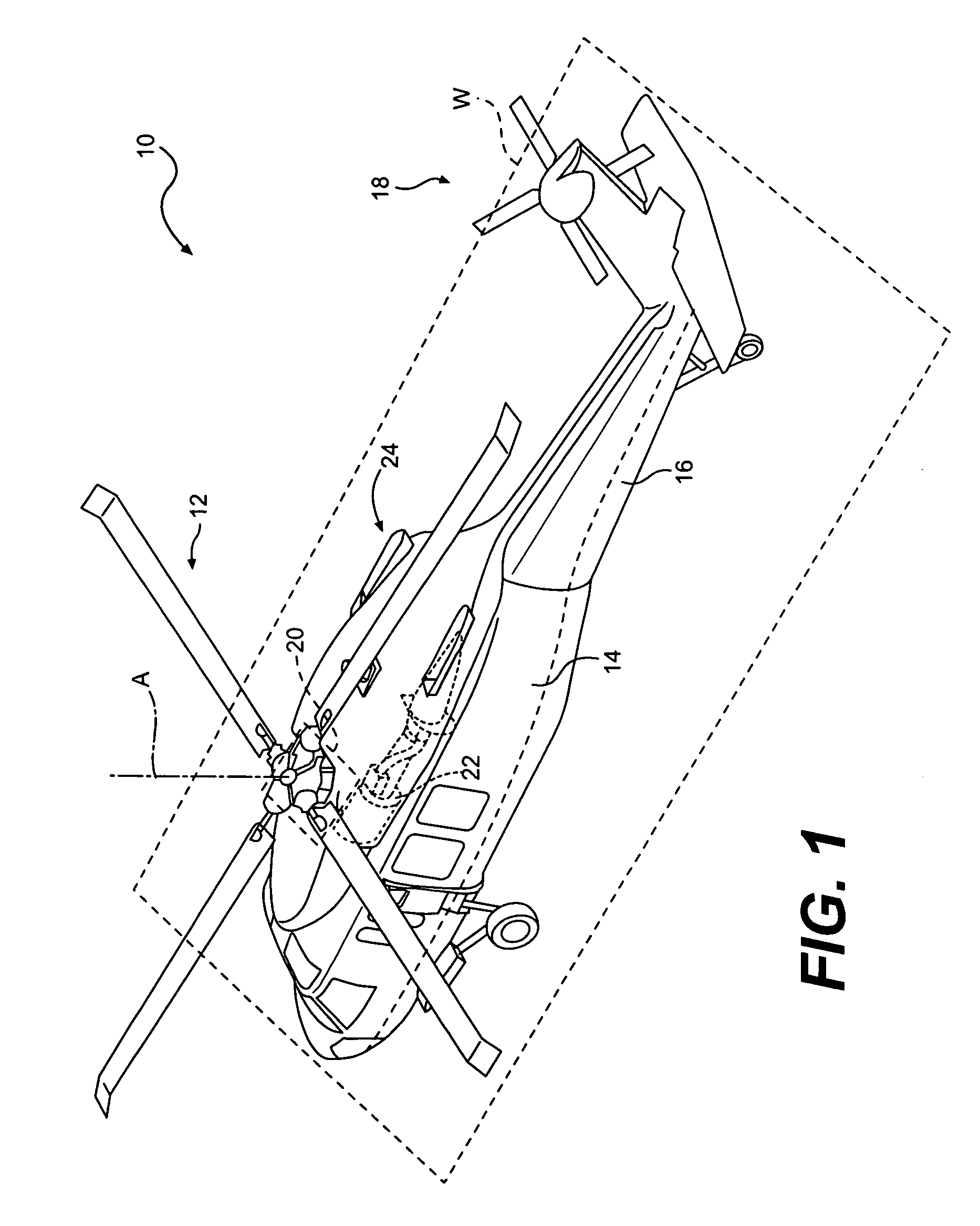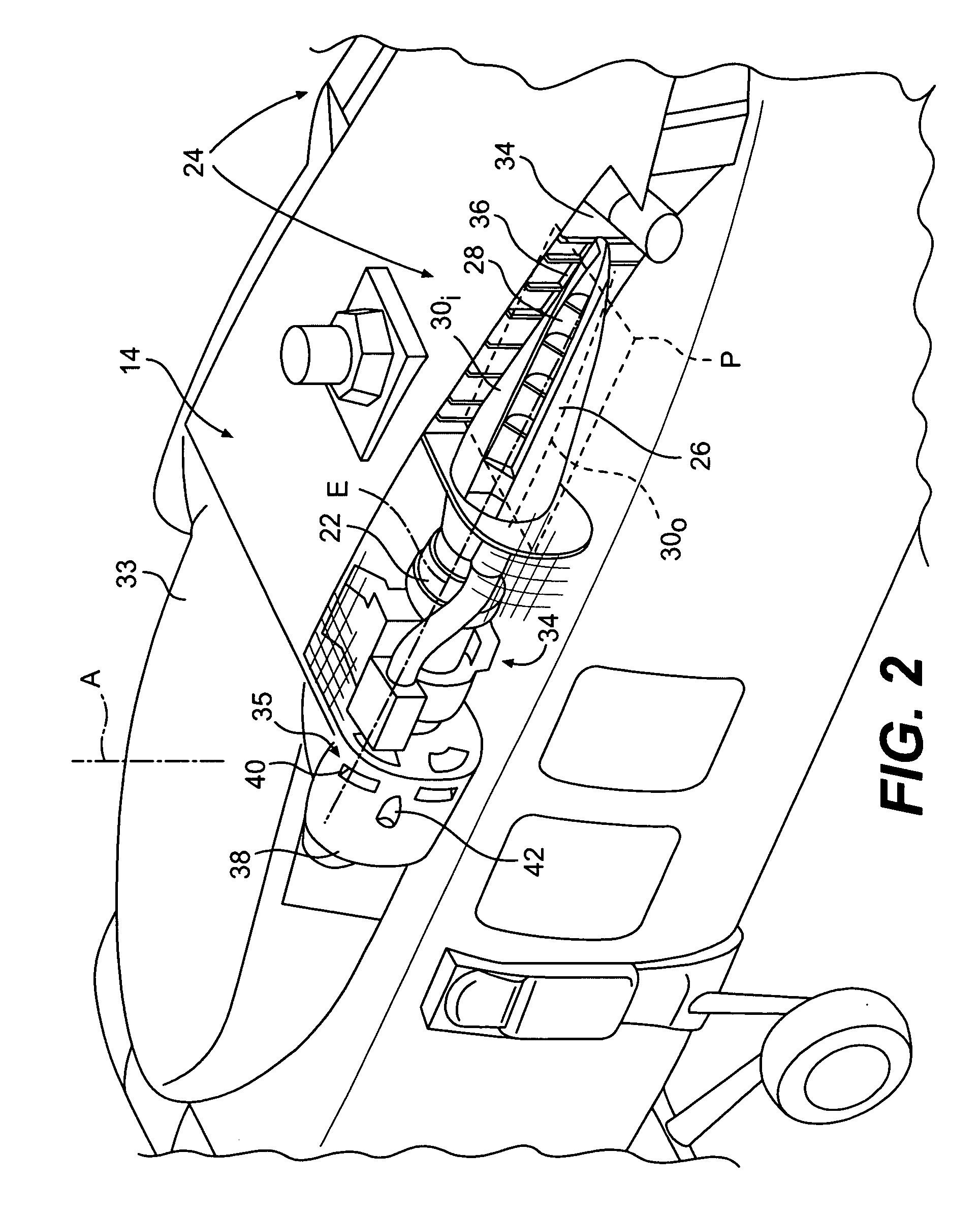Infrared suppression system
a suppression system and infrared technology, applied in the direction of efficient propulsion technologies, machines/engines, transportation and packaging, etc., can solve the problems of lowering the aircraft ir signature, limited ir suppression system, and limited adaptation to relatively small rotary wing aircraft or retrofitting to aircraft which require maintaining current packaging constraints, etc., to suppress the ir energy of a high temperature engine exhaust flow
- Summary
- Abstract
- Description
- Claims
- Application Information
AI Technical Summary
Benefits of technology
Problems solved by technology
Method used
Image
Examples
Embodiment Construction
[0024]FIG. 1 schematically illustrates a rotary-wing aircraft 10 having a main rotor system 12. The aircraft 10 includes an airframe 14 having an extending tail 16 which mounts an anti-torque tail rotor system 18. The main rotor system 12 is driven about an axis of rotation A through a transmission (illustrated schematically at 20) by one or more gas turbine engines 22. Although a particular helicopter configuration is illustrated in the disclosed embodiment, other configurations and / or machines will also benefit from the present invention.
[0025]The rotary wing aircraft 10 also includes an InfraRed Suppression System (IRSS) 24 in communication with each gas turbine engine 22. The IRSS 24 suppresses the IR signature radiating from the high-temperature exhaust generated by the gas turbine engines 22. In the context used herein, “suppress” means that the IR signature emanating from the gas turbine engine 22 is reduced after passage through the IRSS 24 below that as expelled by the gas ...
PUM
 Login to View More
Login to View More Abstract
Description
Claims
Application Information
 Login to View More
Login to View More - R&D
- Intellectual Property
- Life Sciences
- Materials
- Tech Scout
- Unparalleled Data Quality
- Higher Quality Content
- 60% Fewer Hallucinations
Browse by: Latest US Patents, China's latest patents, Technical Efficacy Thesaurus, Application Domain, Technology Topic, Popular Technical Reports.
© 2025 PatSnap. All rights reserved.Legal|Privacy policy|Modern Slavery Act Transparency Statement|Sitemap|About US| Contact US: help@patsnap.com



